
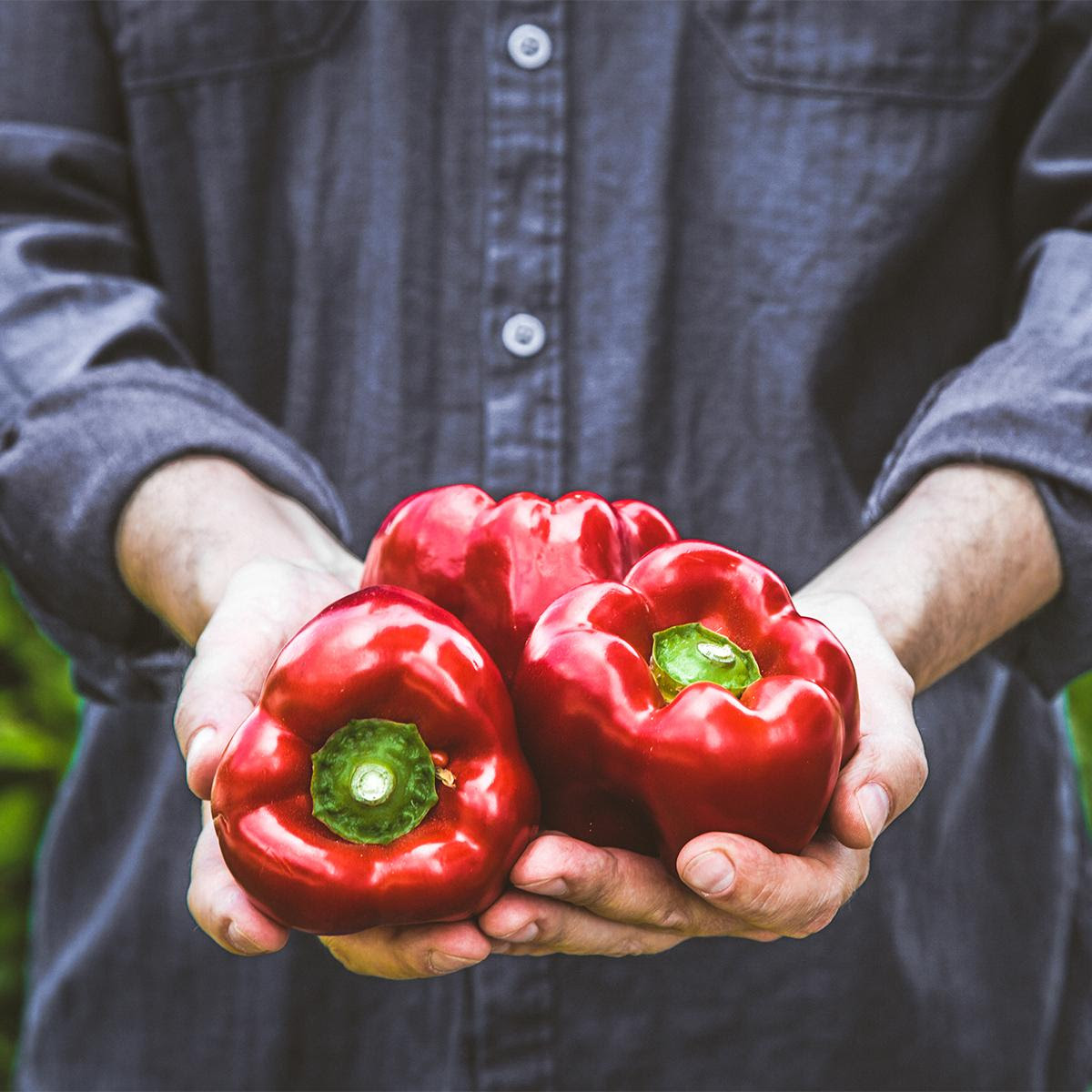
Fruit or Vegetable
A bell pepper is actually a fruit, not a vegetable. Fruits and vegetables are classified depending on which part of the plant they come from. A fruit comes from the flowering part of the plant that contains the seeds. The rest of the plant, such as the root, stem, or leaves, are considered a vegetable. Some other examples of a fruit that we tend to think of as a vegetable include tomatoes, peas, squash, and pumpkins.
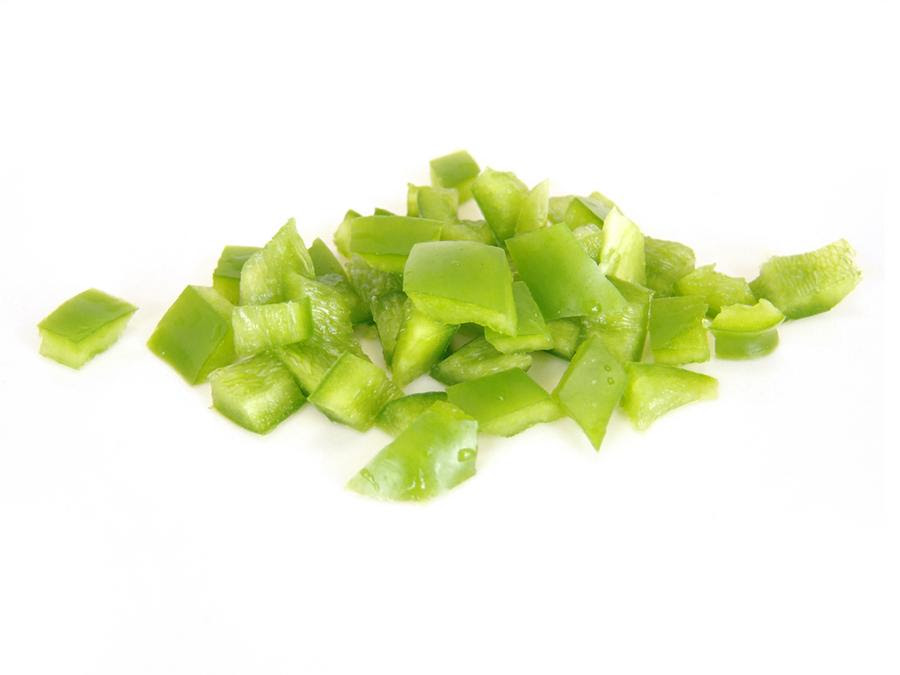
DICED BELL PEPPER FUN FACT
Bell peppers, also known as capsicums, are considered “perfect flowers” because they contain both male and female reproductive organs with each flower, allowing them to self-pollinate.
Color
All bell peppers start out as green. Green is just a bell pepper that is still immature in its growing cycle. The time of planting a seed to harvesting and freezing green bells is approximately 80-110 days. If a green bell pepper is left on the plant for another 30-45 days, it will turn red. A yellow bell pepper may start out as green, but it does not turn red the longer it sits on the plant. Yellow bell peppers are bred specifically to produce yellow.
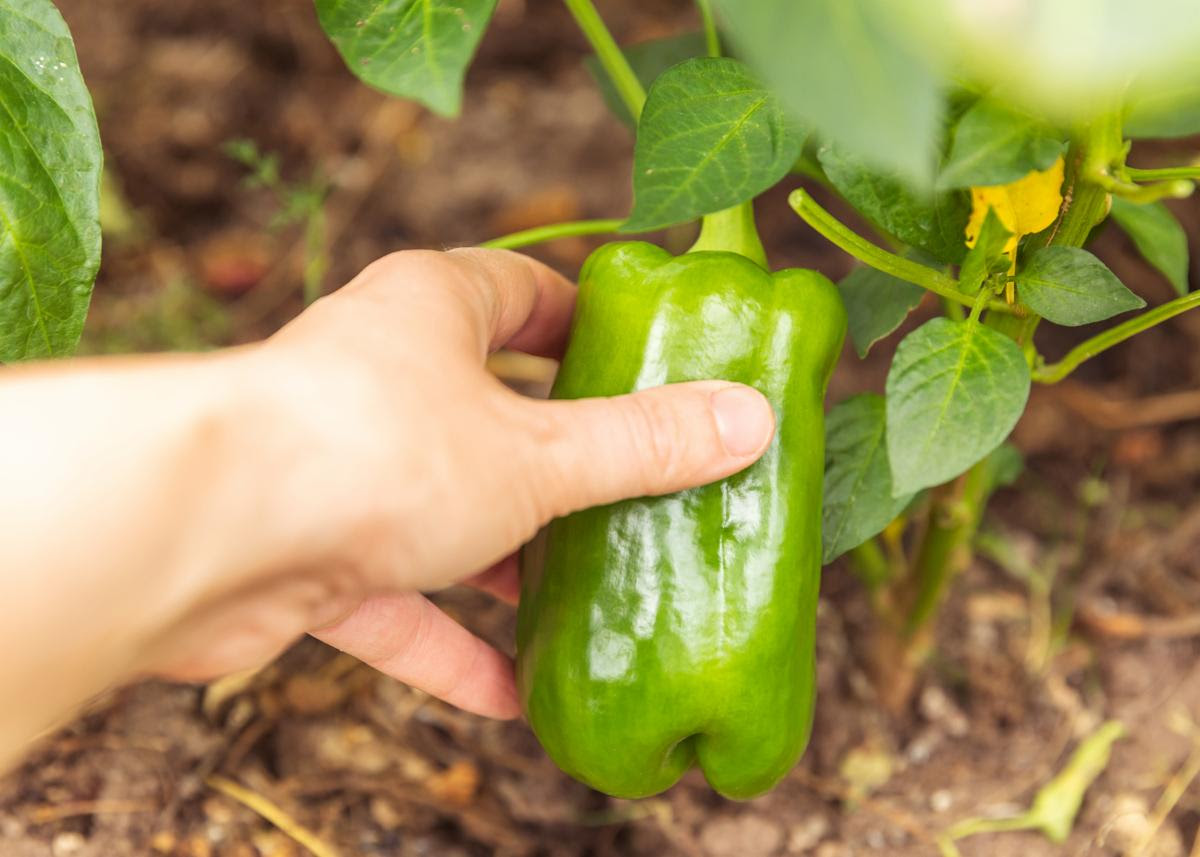
Today, most bell peppers on the west coast start in a greenhouse. Because a greenhouse controls growing conditions like temperature, moisture, humidity, and can protect seedlings from insects, seeds grow into healthier plants faster than direct seeding the ground. This method also allows the seeds to start up to six weeks earlier than spring ground temperatures would normally allow.
Because a red bell pepper requires another 30-45 days in the field than green, that means extra weeding, watering, fertilizing, and tying up the ground longer from planting other crops. Green bells are generally machine-harvested, which destroys the plant so there’s only one pick, whereas red bells are generally hand-harvested so that a second pick is possible. That’s why red bell peppers cost more to grow than green bells.
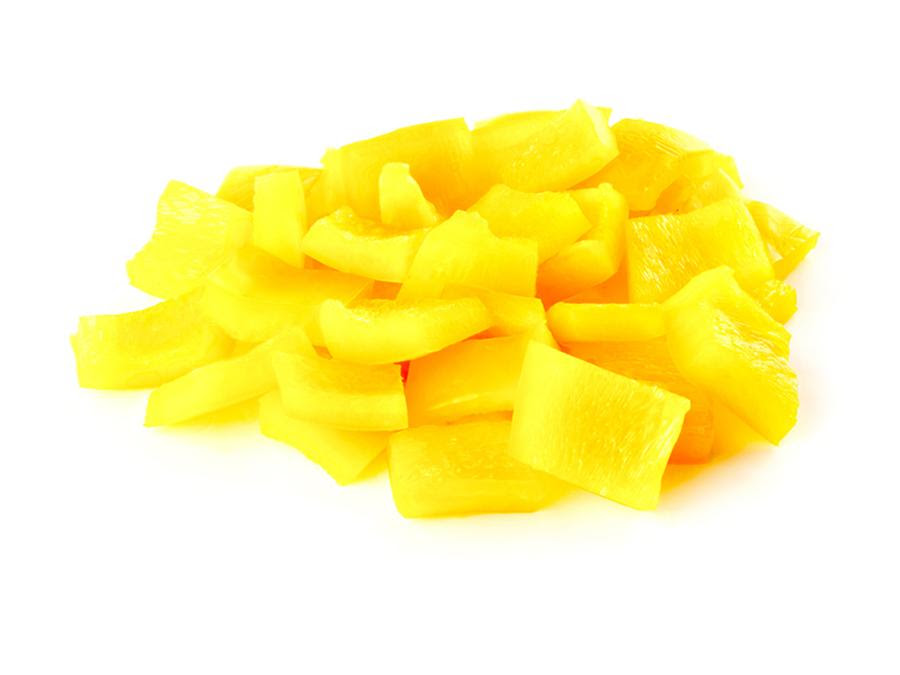
DICED BELL PEPPER FUN FACT
California is the largest growing region in the country for bell peppers. Because of fertile soils, long sunny days, low humidity, and no rain during the summer growing season, bell pepper plants are very happy here.
The Flash-Freezing Cycle
When a bell pepper is ready to be picked, the time from harvest, through flash freezing, and packaging can be measured in hours. Since farmers pick the peppers at the time of peak freshness for each respective color, flash freezing locks in the highest level of flavor and nutritional elements. This makes red bell peppers not only the sweetest, but the healthiest of the three colors.
Where does all of the pepper waste go?
The stem, core, and seeds comprise up to 30% of the weight of a bell pepper. Considering Eckert Frozen Foods processes and freezes over 90 million pounds of fresh peppers every year, that’s a lot of waste. But none of our waste goes to the landfill. Our pepper waste is collected and then sent to local dairy farms where the cows enjoy a sweet treat during the hot summer months.
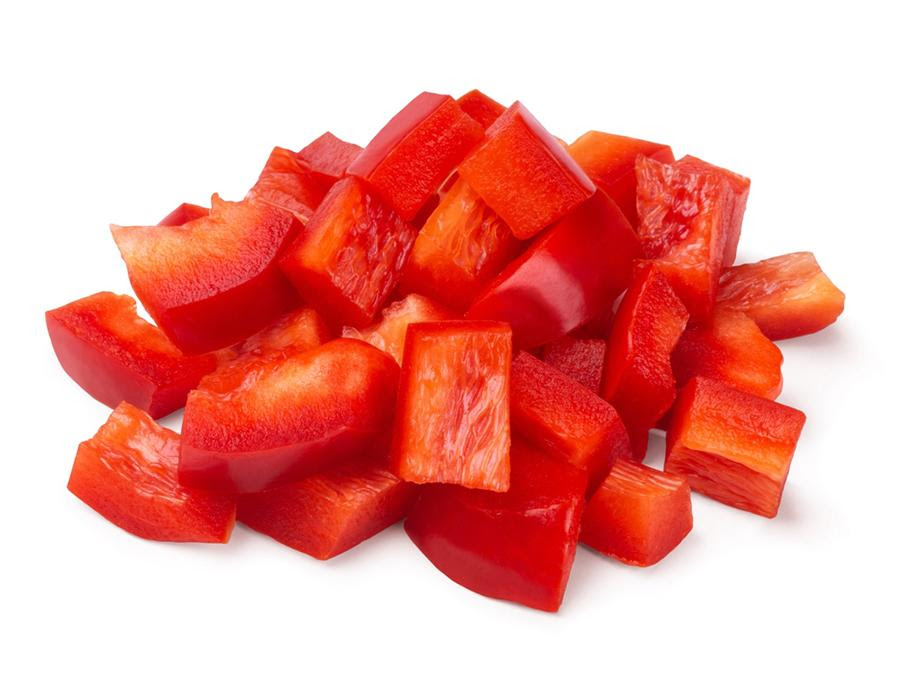
DICED BELL PEPPER FUN FACT
A diced red bell pepper contains more vitamin C than an orange.
Taste and Nutrition
Because red bell peppers stay on the plant the longest, they have more time to develop natural sugars, nutrients, and water-soluble vitamins like C and B-12. Because green bell peppers are an immature fruit, their taste is more bitter and they are not as nutritious as yellow or red. One red bell pepper provides 3 grams of fiber, 93% of your daily requirement for vitamin A, and over 300% of your daily vitamin C needs.
Whether your preference is green, yellow, or red, bell peppers are a great tasting, nutritious, healthy addition to any recipe, pizza topping, or stuffed and baked. Eckert has been processing and freezing bell peppers for over 55 years, so we know IQF peppers. For further inquiries or questions please visit www.Eckertcs.com.

